The history of animation stretches back to the late 1800s, and today, the animation industry is bigger than ever, with more variety and volume on offer than you can even get your head around.
The types of animation, as well as the scale and number of productions, have expanded.
Certain animators have stood out for their contributions to the craft. This list highlights some of the most notable animators in history.
Nick Park
When it comes to stop motion and claymation, Nick Park is arguably the best and most successful animator of this style in the world. Born in England in 1958, he had a keen interest in filmmaking and animation from a young age.
Everything changed when he joined the British animation studio Aardman Animations in 1985. There, he created some of the most well-known stop motion animation films of all time.
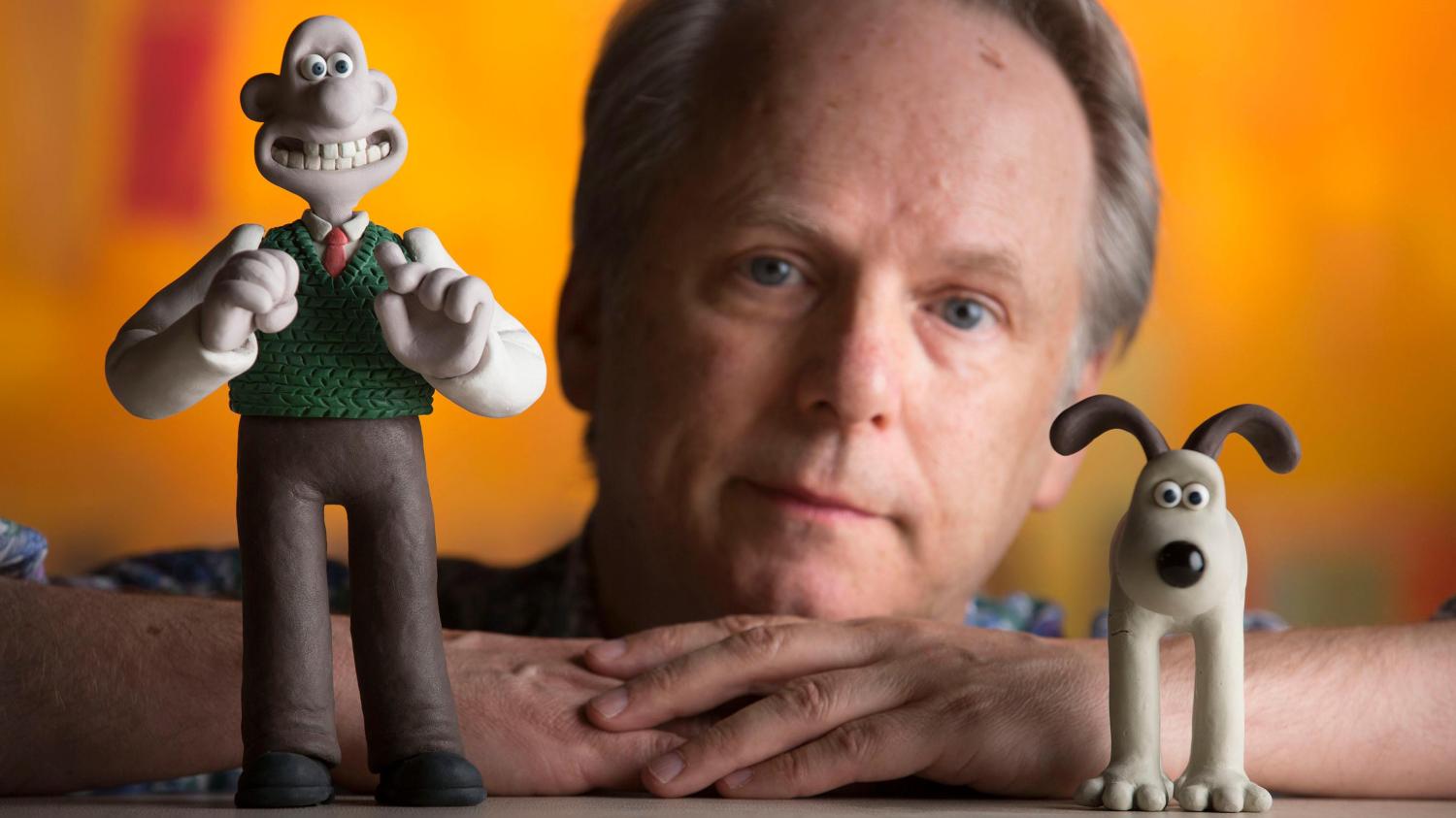
Park has received numerous awards for his work, including four Oscars (from six nominations). Since its release in 2000, Chicken Run has held the top spot as the highest-grossing stop motion animation film of all time.
Rebecca Sugar
Since becoming a professional animator in 2009, Rebecca Sugar has been a core part of two highly influential and beloved animated shows. Sugar got her first big break when she joined the Adventure Time team in the first season as a storyboard revisionist.
Sugar is the first woman to create an animated series for Cartoon Network.

Sugar worked on both Adventure Time and Steven Universe simultaneously until the situation became untenable, and so she left Adventure Time after season five.
Sugar’s work has earned praise for its representation of LGBTQ+ themes. She’s an animator who puts herself into her work, and we feel that the series she’s worked on are all the better for it.
John Lasseter
There’s no better example of an animator who parlayed a love of animation into a big-time career than John Lasseter. Born in 1957, Lasseter was obsessed with cartoons as a kid.
He then studied character animation at the new California Institute of the Arts before joining Disney as an animator in 1979. During the early 1980s, Lasseter became fascinated with the newly emerging capabilities of computer-generated graphics.
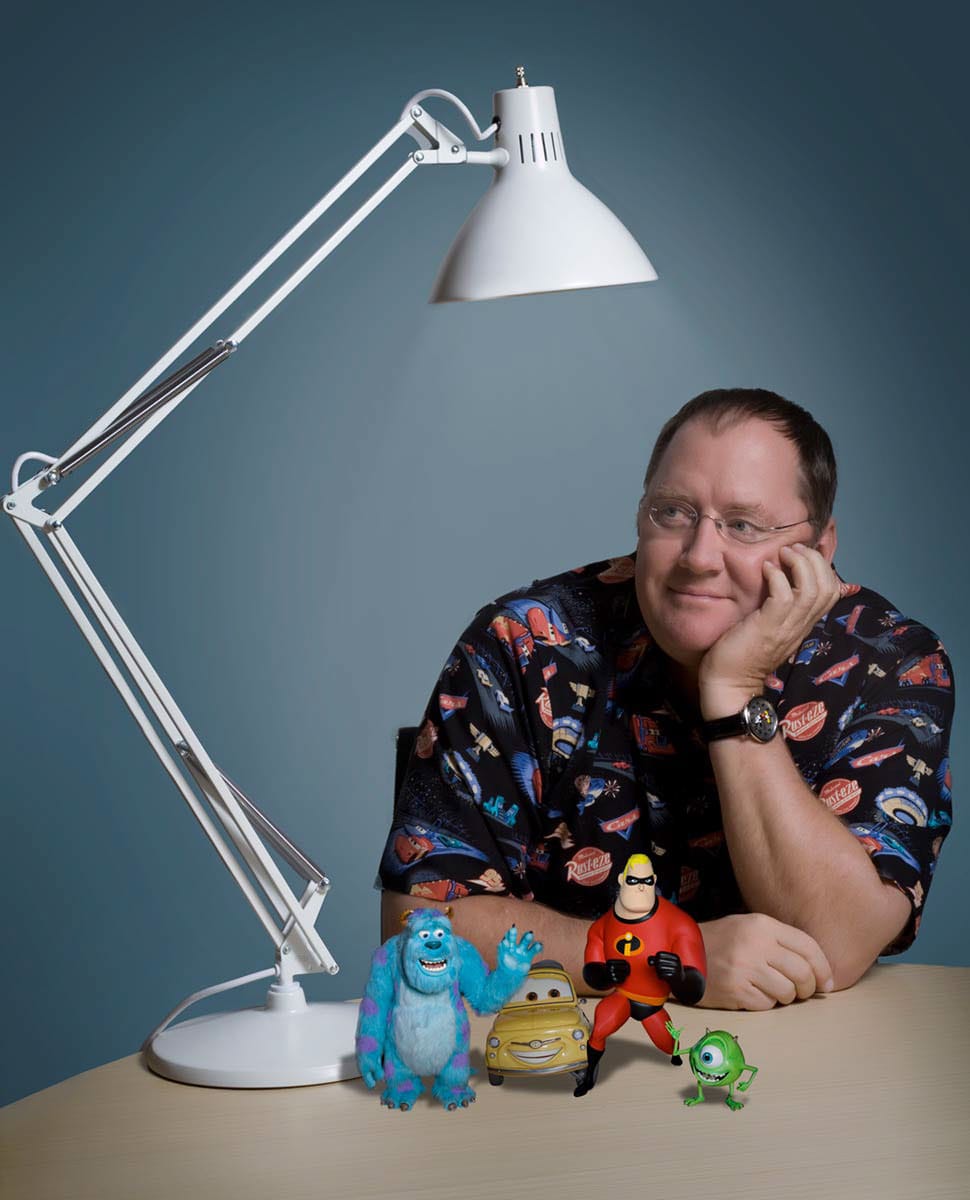
Lasseter’s vision for the potential of CGI was more than realized. At Pixar, he directed Toy Story (1995), A Bug’s Life (1998), Toy Story 2 (1999), Cars (2006), and Cars 2 (2011) and worked as a film producer on almost all of its movies, such as Inside Out (2015) and Frozen (2013).
The films he has been involved in have brought in more than $19 billion in revenue, making him one of the most successful filmmakers in history.
Lotte Reiniger
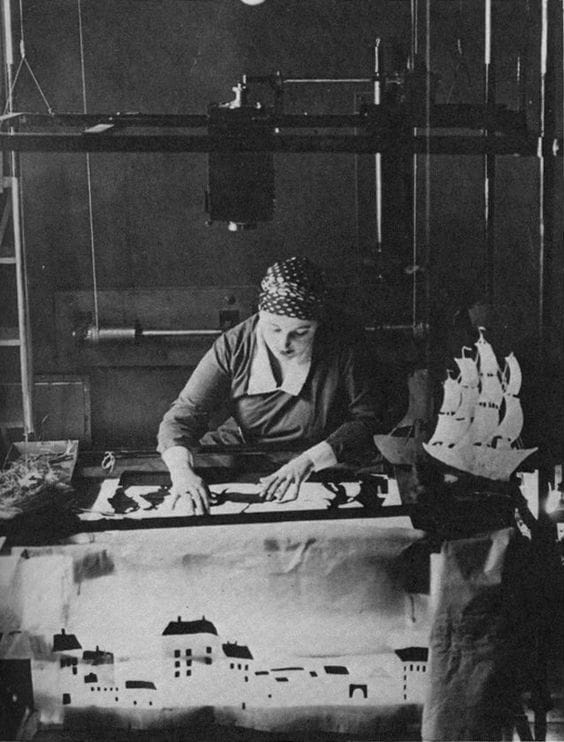
The German animator and filmmaker Lotte Reiniger was a true pioneer. Born in 1899, Reiniger developed an early fascination with the German art of ‘scherenschnitte,’ which was inspired by the paper cutting and silhouette art form from China.
Reiniger also had a passion for the theater and for acting. She combined her love for acting and silhouette puppetry and started to recreate plays and fairytales.
By 1915, Reiniger was working in the film industry, first producing title cards before creating animations and eventually producing her own films.
Reiniger made short films and advertisements in her early career. But in 1926, she produced what could be her best-known work: The Adventures of Prince Achmed.
William Hanna and Joseph Barbera
It could be argued that William Hanna and Joseph Barbera each deserve their entry on this list, but their careers became so intertwined that they are inseparable.
The pair met while working at the animation department of Metro-Goldwyn-Mayer (MGM) in 1937, sparking the beginning of arguably the most successful animation partnership of all time. MGM dissolved its animation division in 1957, so Hanna and Barbera co-founded the Hanna-Barbera animation studio.
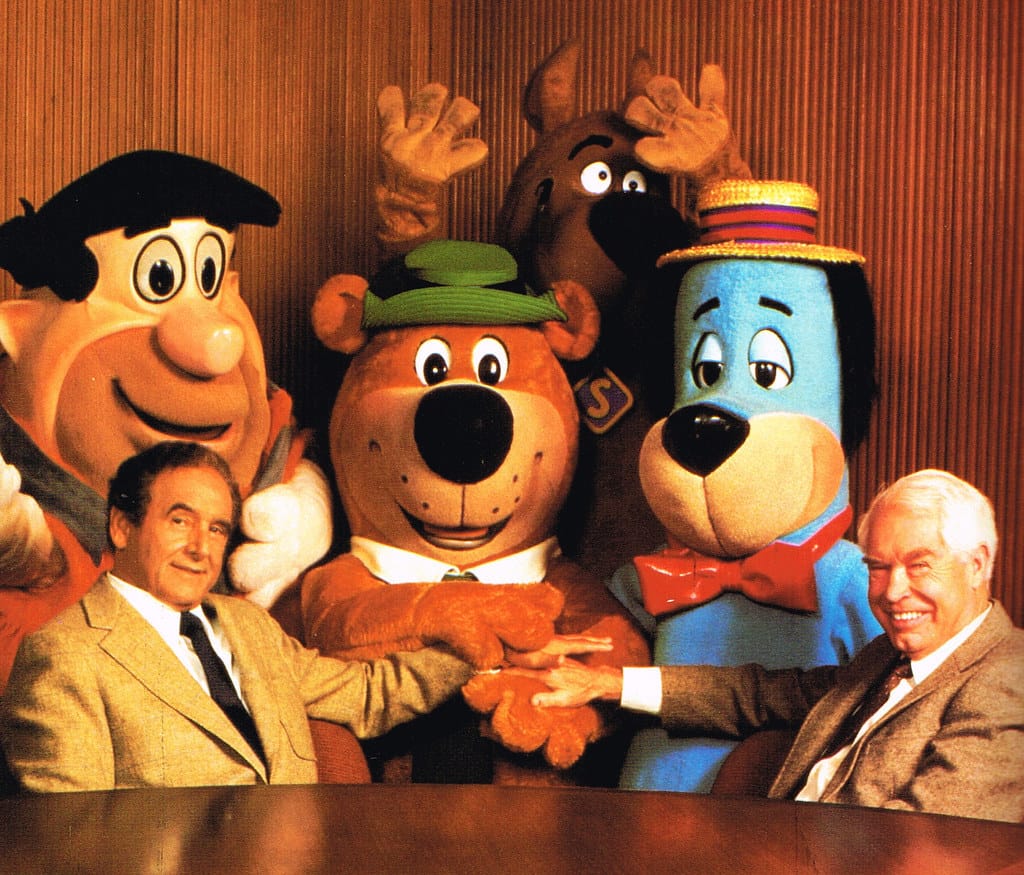
William Hanna and Joseph Barbera's partnership lasted some 60 years, and some of the characters and properties they created are still producing new material today.
Get creative with our ready-to-use templates.
Linearity Curve offers templates for every social media platform and various use case templates for posters, business cards, slides, app store screenshots, and more.
Hayao Miyazaki
The Japanese animator and director Hayao Miyazaki is one of the most revered and respected figures in animation for a good reason. His animation style is unmistakable, and as a director, he has created some of the most incredible anime films in living memory.
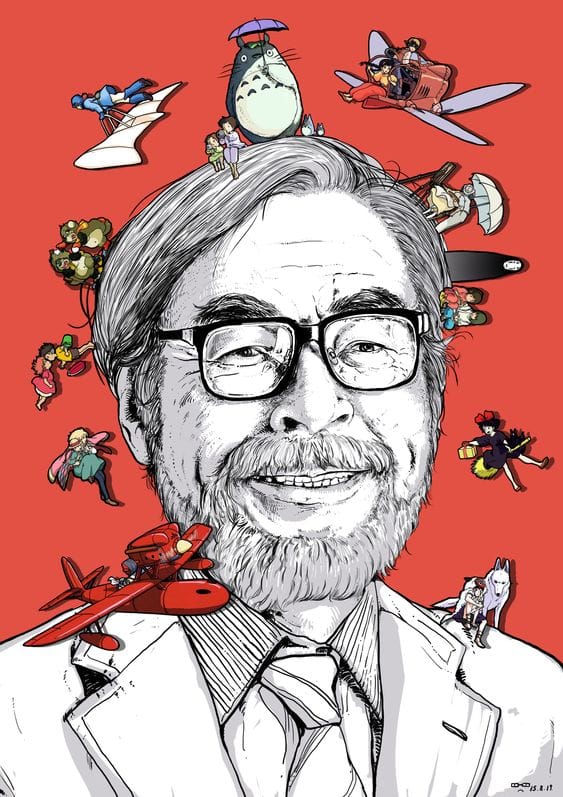
In 1985, Miyazaki co-founded Studio Ghibli and released its first movie, Castle in the Sky (1986).
This marked the start of Studio Ghibli’s incredible trajectory and resulted in Miyazaki being considered one of animation’s most successful filmmakers.
No wonder he’s one of the world's most famous animators.
Walt Disney
The Disney empire is sprawling and covers so much of the entertainment world that it’s easy to forget it started as an animation studio in 1923.
Walt Disney had a keen interest in drawing and animation from a young age. He took art classes and became a commercial illustrator before setting up Disney Brothers Studio along with his brother Roy.
One of Walt Disney’s earliest creations was Mickey Mouse, and soon after the studio started producing feature films, such as Snow White and the Seven Dwarfs (1937), Fantasia (1940) and Dumbo (1941). Films like these pushed the potential of animated movies and went a long way in establishing the animation industry.
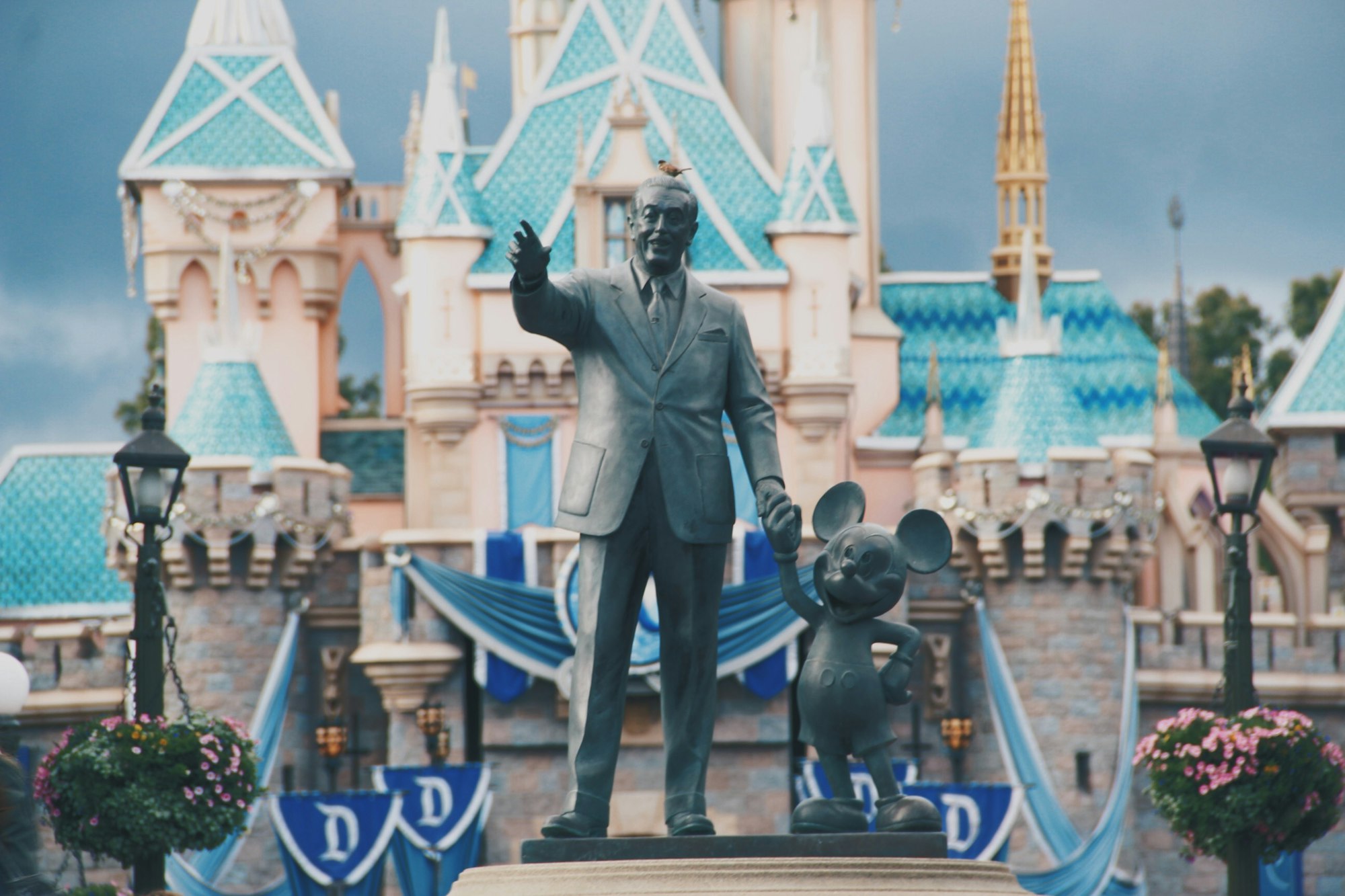
Disney would also make live-action films, including classics like Mary Poppins (1964).
Disney also got involved in theme parks, starting with Disneyland. From then, the empire has continued to grow, but it all started with Walt Disney’s cartoons.
Yuri Norstein
The Soviet and Russian animator Yuri Norstein is considered one of the best animators of all time, even though he has produced a comparatively small number of animated films.
Norstein studied art at school and then took a two-year animation course. In 1961, after he completed his studies, he joined the studio Soyuzmultfilm. There, he worked as an animator on around 50 films before getting the opportunity to direct his own in the late 1960s.
He went on to direct some incredible films and was renowned for his sophisticated animation style. Even Hayao Miyazaki says that he thinks Norstein is a great artist, saying that Norstein’s Hedgehog in the Fog (1975) is one of his favorite films.
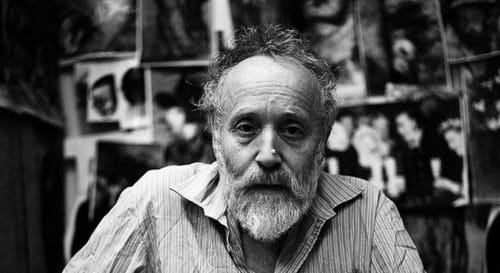
Unfortunately for Norstein, the slow production of his feature film, The Overcoat, led Soyuzmultfilm to fire him in 1985. Norstein remained undeterred and continued with the film's production.
Amazingly, production has been underway for over 40 years since the film was first started, making it the longest production time of any animated motion picture in history. Norstein is now 80, so let’s hope he finishes it soon.
Matt Stone and Trey Parker
We’re doubling up on entries again with two animators in one, but the creative partnership of Matt Stone and Trey Parker has impacted the world of animation, and they couldn't have achieved what they have without each other.
The pair met through a film class at the University of Colorado. They bonded over a shared love of Monty Python and anti-authoritarian comedy. After university, Stone and Parker collaborated on a few feature-length films with moderate success.
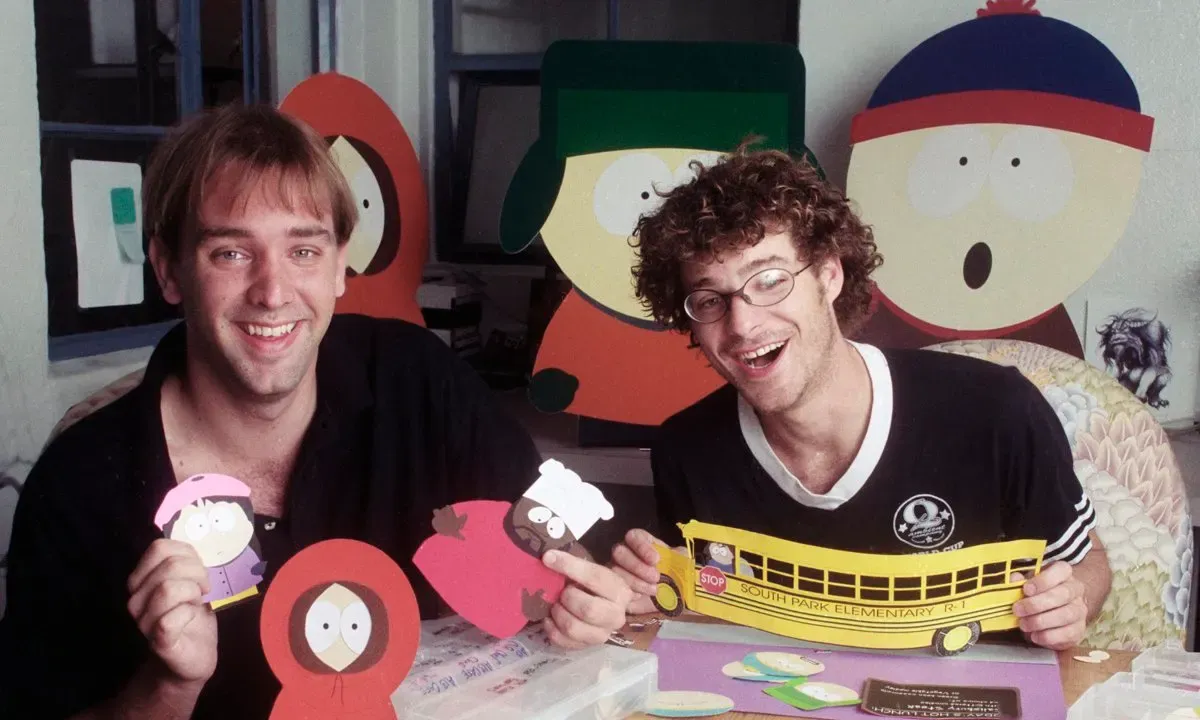
The late 90s were tough, and the pair struggled to break through. Then, Comedy Central gave the green light for a new animated show from Stone and Parker—South Park.
The pilot episode was created using old-school cut-paper stop motion animation techniques and took around three and a half months to complete. While subsequent episodes used computer animation, the style still mimics the cut-out stop motion vibe.
South Park has become one of the most successful animated series of all time, and it’s currently in its 26th season.
Te Wei
Chinese animator and artist Te Wei, born Sheng Song in 1915, was the child of a poor family from Shangai. He started by drawing political cartoons before becoming an animator under the tutelage of his mentor, Tadahito Mochinaga.
In his early years as an animator, Te Wei had the artistic freedom to experiment with different animation techniques. He became well known for his ink-wash animation style, inspired by the painter Qi Baishi.
From the mid-1950s to 1963, Te Wei produced several animated films, including The Proud General (1956), Where is Mama (1960), and The Cowboy’s Flute (1963). He won both Chinese and international awards for his work on Where is Mama. Tragically, in 1964, he was imprisoned for a year during Chairman Mao’s Cultural Revolution.
After his release, he remained in exile and couldn’t return to his studio until 1975. For the rest of the 1970s and 1980s, Te Wei went through another period of intense activity.
Stephen Hillenburg
The origin of Stephen Hillenburg’s animation career is fascinating and unexpected. As a child, he was enthralled by the ocean and had a keen interest in art. He would go on to study marine science at the Humboldt State University in Arcata, California, with a minor in art.
His first job after university was as a marine biology instructor at the Orange County Marine Institute in 1984. While there, an instructor asked him if he wanted to create an educational comic book for kids. It ended up being called The Intertidal Zone and showed the animal life in tidal pools.
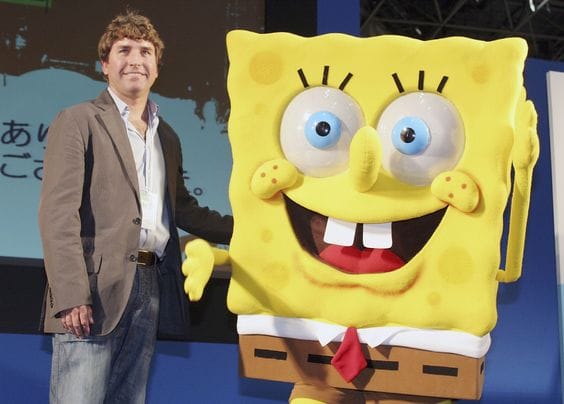
After deciding to leave teaching, Hillenburg enrolled in the California Institute of the Arts in 1989 as a pathway to a career in animation.
Soon after he completed his studies at CalArts, Hillenburg got a job working on the Nickelodeon show Rocko’s Modern Life (1993). He then started working on the characters he had developed for The Intertidal Zone and pitched a show to Nickelodeon.
Genndy Tartakovsky
Russian-American animator Genndy Tartakovsky is yet another California Institute of the Arts graduate. His family is originally from Moscow, but they moved to the United States when he was seven years old as his parents were concerned about the impact that antisemitism could have on their children’s lives.
When they relocated to Chicago from Columbus, Ohio, Tartakovsky discovered comics and immediately fell in love with what he found.
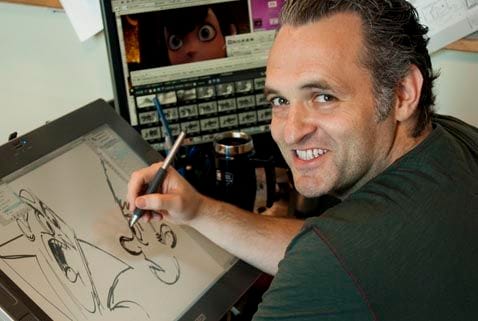
He had a few different animating jobs, but things developed for Tartakovsky when Hanna-Barbera hired him.
Cartoon Network eventually commissioned Tartakovsky to produce Dexter’s Laboratory, and since then, he’s worked on many beloved animated shows and films.
Matt Groening
We don’t need to say anything other than ‘Matt Groening created The Simpsons’ to convey just how important a figure in animation Matt Groening is.
He started his career as a cartoonist in 1978 when he began selling his self-published comic book Life in Hell in the corner of the record store where he worked. He had just moved to Los Angeles, and the comic strip was his way of explaining to his friends what life was like there.
The strip became an instant success and was eventually syndicated in 250 weekly newspapers. Amazingly, Groening kept the strip going right up until 2012.
In 1985, he was approached and asked to bring the strip to life as a series of short animated skits on The Tracey Ullman Show. Groening was scared that the new format would fail and take his comic strip down, so he invented a new set of characters—The Simpsons.
The skits were a hit and turned into its own The Simpsons series, which has since become the longest-running US primetime TV show and the longest-running US animated series and sitcom.
As if that weren’t enough, Groening also created Futurama (1999) and, most recently, Disenchantment (2018), making him easily one of the most successful cartoon artists ever.
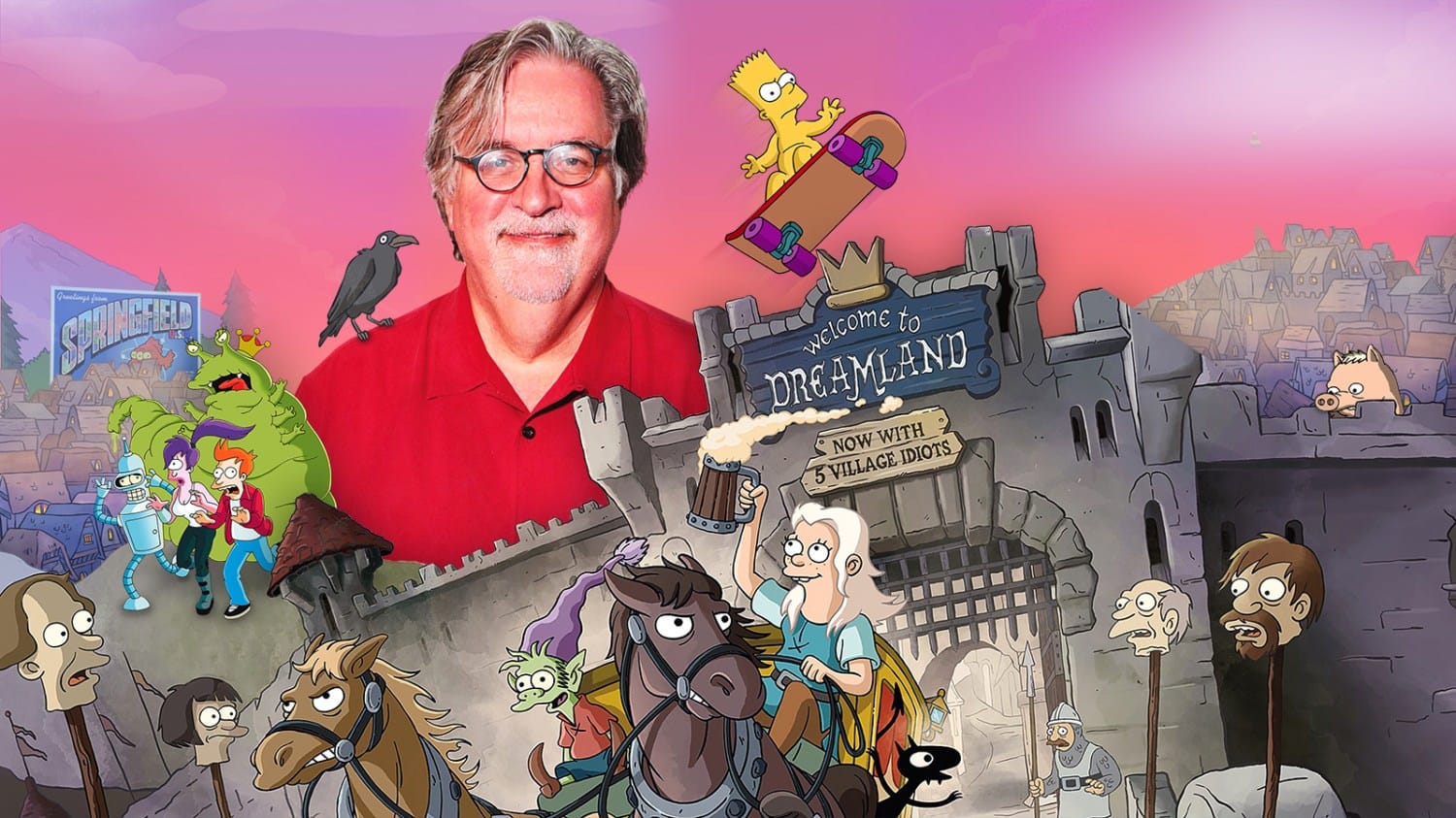
Tex Avery
The era from 1928 to the early 1970s is known as the ‘golden age of American animation.’ This was the time when sound cartoons were at their peak, and many of the most culturally significant and financially successful cartoons emerged during this period of the American animation industry.
Warner Bros. and MGM were the leading studios he worked for, and through his work for them, he helped bring characters like Bugs Bunny, Daffy Duck, and Elmer Fudd to life.
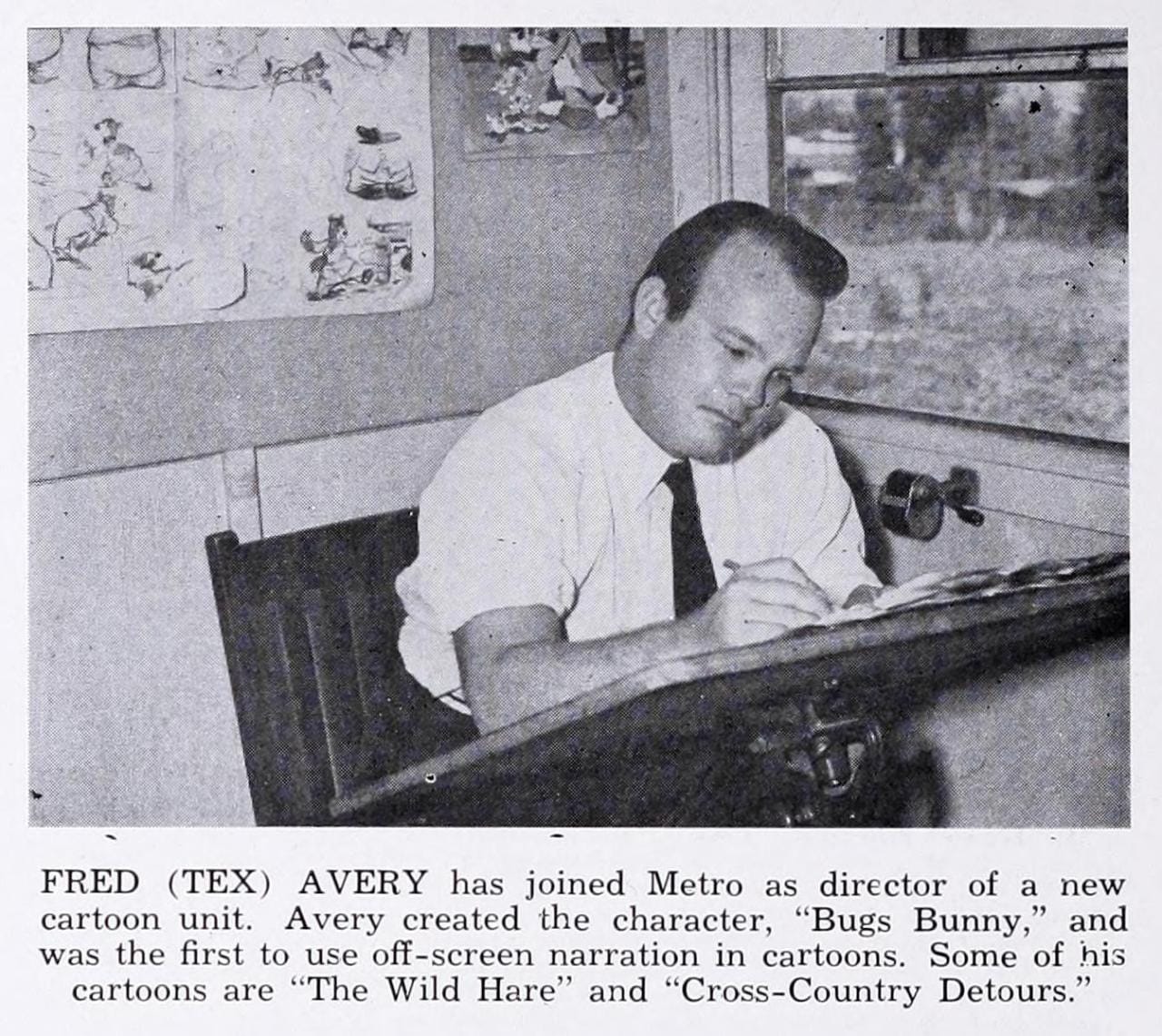
Avery started his career as an inker in an animation studio before working his way up to become a storyboarder and then a director. His cartoons were known for their wacky nature and often violent humor.
Ray Harryhausen
A true pioneer of his day, Ray Harryhausen was an American animator and special effects creator who was an absolute master of stop motion animation.
Harryhausen was inspired by the 1933 film King Kong, particularly the scenes that used stop motion. He spent the 1930s and 1940s experimenting with producing short animations. In the 1950s, he started working in technical effects on feature films.
Some of the most notable productions he worked on are The 7th Voyage of Sinbad (1958) and Jason and the Argonauts (1963).
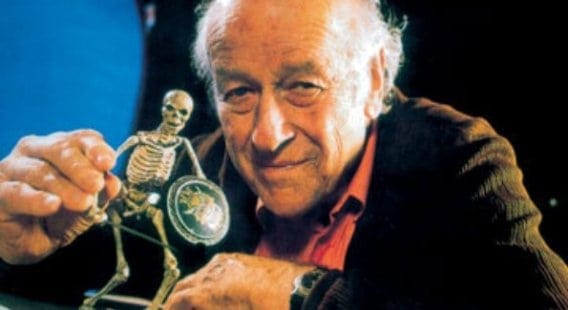
Harryhausen was a true innovator, creating a stop motion technique called ‘Dynamation.’
The key to Dynamation was the use of split-screen or double exposure techniques. Harryhausen would often film the live-action elements first, leaving space in the frame for the animation. He then employed a particular process to combine these elements:
- Rear projection: The live-action footage was projected onto the back of a translucent screen.
- Stop motion animation: Harryhausen would animate his models frame by frame in front of this screen. For some scenes, he used a technique called "matte painting" to mask parts of the live-action footage during the first shoot.
- Combining elements: The animated sequence and the live-action background were then combined through careful alignment and exposure control, making it appear as if the animated models existed within the same space as the live-action footage.
What makes Harryhausen such an important animator is his work and influence on other filmmakers. Giant names in films such as Peter Jackson, Steven Spielberg, Tim Burton, George Lucas, and Wes Anderson cite Harryhausen as an influence.
Ready to create brand assets that pack a punch?
Visit our Academy for free marketing animation courses.
Ralph Bakshi
When the conversation turns to pioneering American animation, Ralph Bakshi's name is one you can't overlook. Born in 1938 in Mandatory Palestine (now Israel), Bakshi emigrated to the United States with his family at a young age and quickly developed an affinity for the world of animation.
Bakshi is the force behind revolutionary works like Fritz the Cat (1972), Heavy Traffic (1973), and Cool World (1992). He often serves in multiple roles as writer, director, and producer—truly a jack of all trades in the animation world. His work tackles mature and controversial themes, distinguishing him as a maverick in the industry.
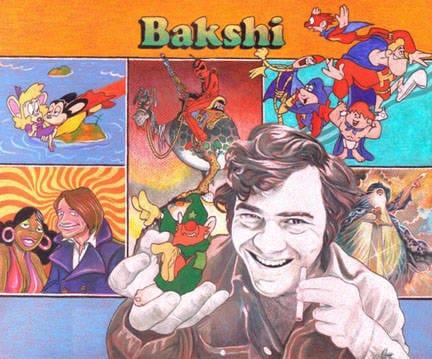
Throughout his career, Bakshi received several awards and nominations, and his influence remains palpable in animated films. While he may not have Oscars lining his shelf, his cultural impact and fearless innovation make him a legend in the animation landscape.
Don Bluth
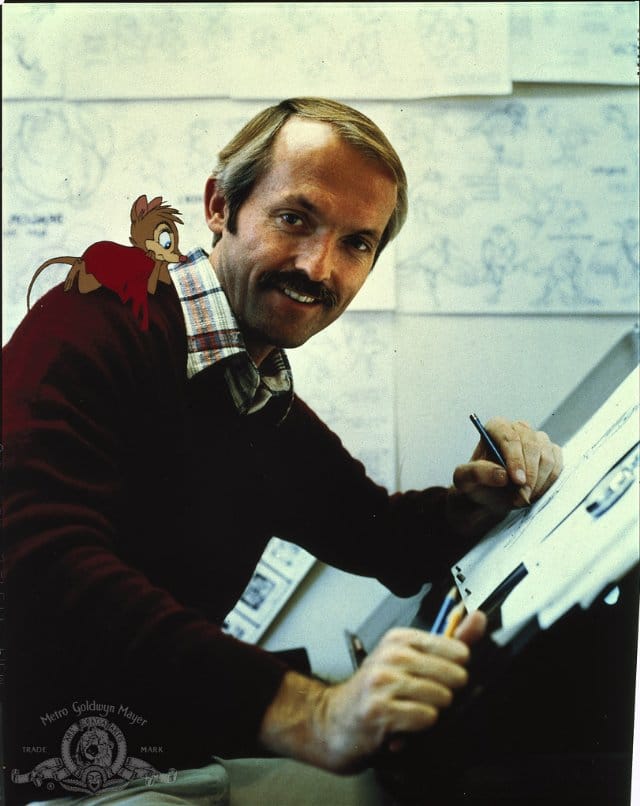
In American animation, Don Bluth is a formidable figure, often lauded for his dedication to traditional hand-drawn animation techniques.
Born in 1937 in El Paso, Texas, Bluth's fascination with animation began early in life, setting him on a trajectory to become one of the industry's most celebrated artists.
Bluth is the creative mastermind behind beloved films such as An American Tail (1986), The Land Before Time (1988), and Anastasia (1997). He effortlessly wears multiple hats as a director, animator, producer, and sometimes writer—clearly, he has many talents.
Where to next with animation?
All the animators on this list worked hard to follow their passions and find success, but many others also significantly impacted the animation world.
The legacy of these early animation giants continues to inspire contemporary figures in the field. Artists like John Kricfalusi, Norman McLaren, Alan Becker, and Alvy Ray Smith have built upon the foundations laid by their predecessors, each bringing a unique vision and set of skills to the industry.
The newer generation, including the likes of YouTuber Arin Hanson, carry the torch forward, proving that the world of animation is a rich tapestry woven together by the contributions of many talented individuals over the years.
But being an animator isn't only about following a creative career path or achieving fame and fortune.
Animated storytelling has also become an essential skill in design and marketing. A vector animation tool to help you create captivating online ads, product announcements, social media posts, and more.
With many animation tools available for various applications—from creating 3D worlds to simple 2D storyboarding—it can be daunting to choose appropriate software.
Linearity Move is an easy choice.
Our innovative animation software empowers you to import vector designs and animate them in a few clicks. Try it for free below, or check out our Pro and Org pricing.
Frequently asked questions
What do animators do?
Animators create sequences of images to produce the illusion of movement when displayed in rapid succession. They work in various mediums, including traditional hand-drawn animation, computer-generated imagery (CGI), and stop motion. Their responsibilities typically involve:
- Designing characters and backgrounds
- Developing storyboards that map out key scenes and sequences
- Creating frames for each scene
- Utilizing software to compile and edit images into fluid animations
- Collaborating with directors, other animators, and clients to ensure that the final product aligns with the creative vision and meets project requirements
Animators are crucial in the fields of film, television, video games, and online media. They often specialize in one area, such as character, background, or effects animation.
How much do animators make?
The salary of an animator can vary widely depending on their skills, experience, the industry they work in, and their geographical location. On average, salaries in the United States for animators range from:
- Entry-level: Around $40,000 to $60,000 per year.
- Mid-career: Approximately $60,000 to $85,000 per year.
- Experienced: Can exceed $100,000 per year for highly skilled and senior positions.
Animators working in film and video industries tend to earn more than those in advertising or web design. Also, major entertainment hubs like Los Angeles or New York offer higher salaries compared to other regions. Freelance animators may have varying incomes based on the projects they secure and their rates.
What skills are essential for animators to excel in their profession?
Successful animators possess a combination of artistic talent, technical proficiency, and storytelling ability.
Essential skills include drawing and illustration, proficiency with animation software and tools, understanding anatomy and movement, and the ability to convey emotion and narrative through animation.
Which famous animators didn't study animation at college?
Several renowned animators achieved fame and success without a formal college education, carving out notable careers based on talent, experience, and dedication. Here are a few:
- Hayao Miyazaki—Despite not attending a specific animation school, Miyazaki became one of the most celebrated animators worldwide. He studied economics and political science at Gakushuin University but moved into animation by joining Toei Animation as an artist.
- Lotte Reiniger—She showed an interest in silhouette puppetry and filmmaking from a young age. Reiniger learned the basics of filmmaking and animation through her involvement with the avant-garde art scene in Germany rather than through formal academic studies in animation. Her unique technique involved manipulating cutouts made from cardboard and thin sheets of lead under a camera. This method was something she developed on her own, inspired by Chinese shadow puppetry.
- Te Wei—He studied traditional Chinese painting at the School of Art at the Hangzhou National College (now Zhejiang University). Te Wei began his career in the 1930s as a political cartoonist and illustrator for newspapers and magazines before transitioning into animation in the late 1940s when he joined the Shanghai Animation Film Studio.
- Matt Groening—Best known as the creator of The Simpsons and Futurama, Groening's journey into animation was unorthodox. Groening studied philosophy at Evergreen State College in Olympia, Washington. He didn't take any animation courses. His focus was on writing and drawing. His early career started with the comic strip Life in Hell, which caught the attention of James L. Brooks, a television producer. Brooks approached Groening to create a series of animated shorts for The Tracey Ullman Show. These shorts eventually evolved into The Simpsons, one of history's longest-running and most influential television shows.
What impact does animation have on audience engagement and retention?
Animation profoundly impacts audience engagement and retention due to its ability to stimulate the imagination.
Whether in the form of a memorable character, a stunning visual sequence, or a captivating storyline, animation can captivate viewers and leave a lasting impression long after the experience has ended.
How does animation contribute to the success of multimedia projects and entertainment content?
Animation adds depth, motion, and visual appeal to multimedia projects and entertainment content. It allows creators to depict fantastical worlds, convey complex ideas, and evoke emotion through visuals and movement.
Animation can captivate audiences of all ages and enhance storytelling.
How do animators contribute to the creative process in multimedia and entertainment projects?
Animators contribute to the creative process by collaborating with directors, writers, and designers to develop visual concepts and refine character designs and storyboard scenes.
They use their artistic vision and technical expertise to bring ideas to fruition, iterating on feedback and pushing the boundaries of creativity to achieve the desired aesthetic and narrative impact.
Why is animation an integral part of modern storytelling and visual communication?
Animation transcends language barriers and cultural differences, making it an effective medium for storytelling and visual communication on a global scale.
It allows creators to convey complex ideas, evoke emotion, and entertain audiences of all ages and backgrounds.
Animation is indispensable for engaging, educating, and inspiring audiences worldwide on digital platforms.
What software do animators use?
In the past, before the technological advancements we have today, animators used their talented artistic abilities to sketch and design their characters.
Nowadays, animators are spoilt for choice, with countless software programs catering to various animation levels, from beginner to professional. There isn't a shortage of options, with Adobe products and Linearity Move being popular choices for designers and marketers.
Linearity Move is excellent for both beginner and professional animators. It has an easy-to-use interface and handy tools and templates for character creation through the different animation stages.
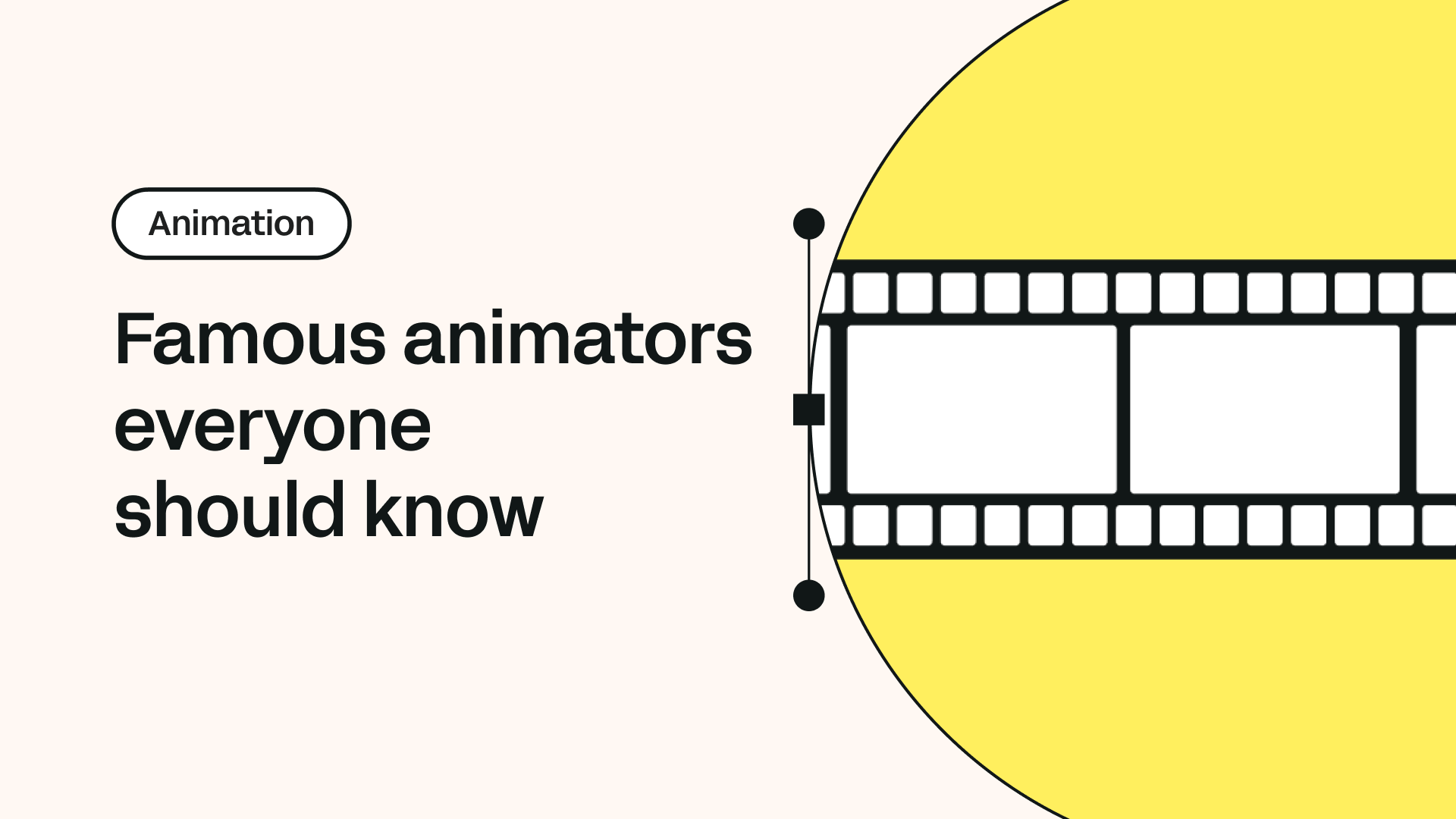

Share this!
Adí Aviram
Adí is an SEO developer working for Linearity in Berlin. Her hobbies include drawing comics, yoga, swimming, infinite scrolling, and birdwatching.


:quality(75))
:quality(75))



:quality(75))




:quality(75))
:quality(75))



